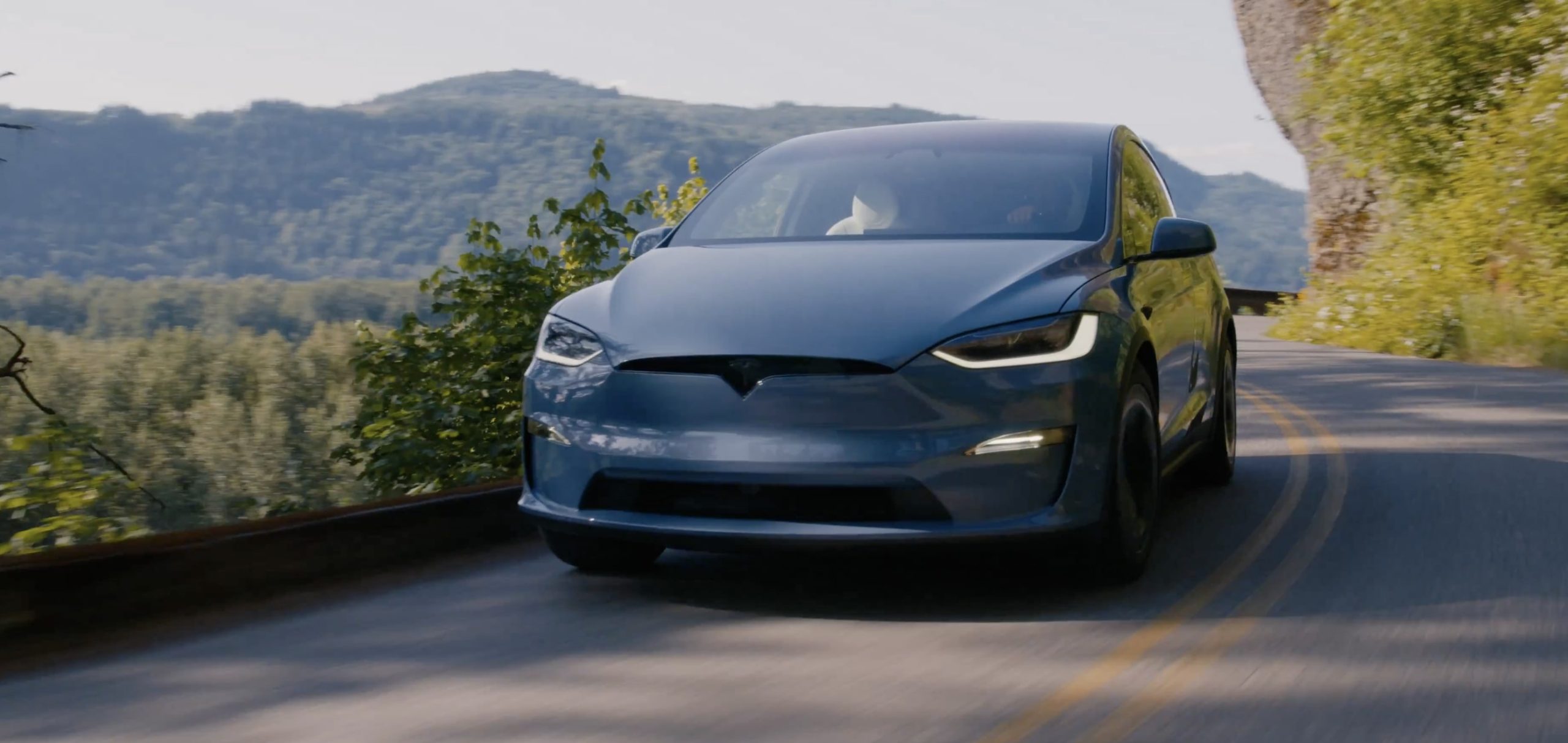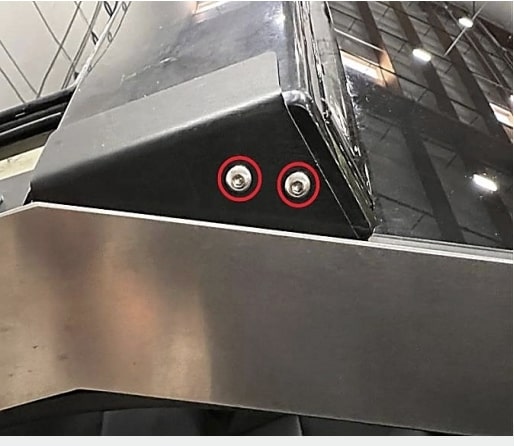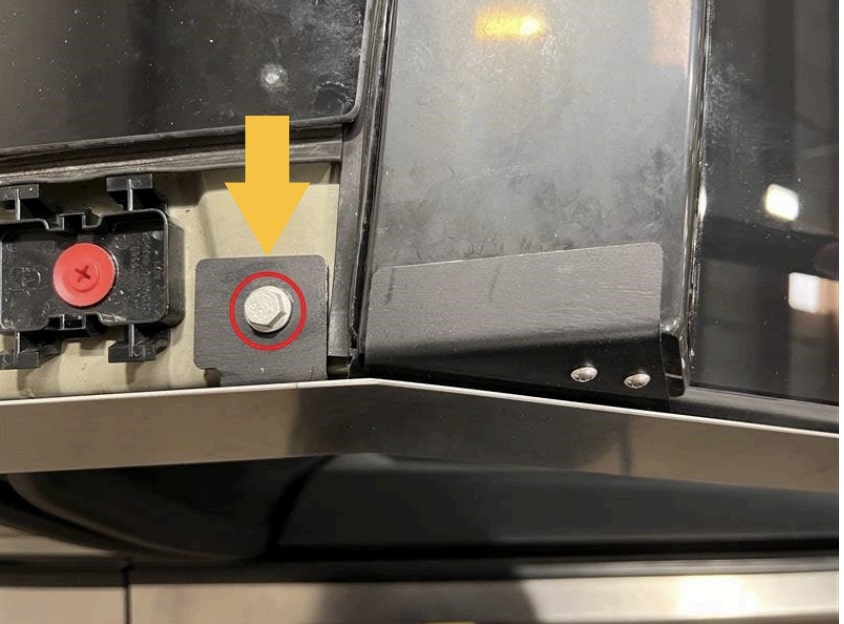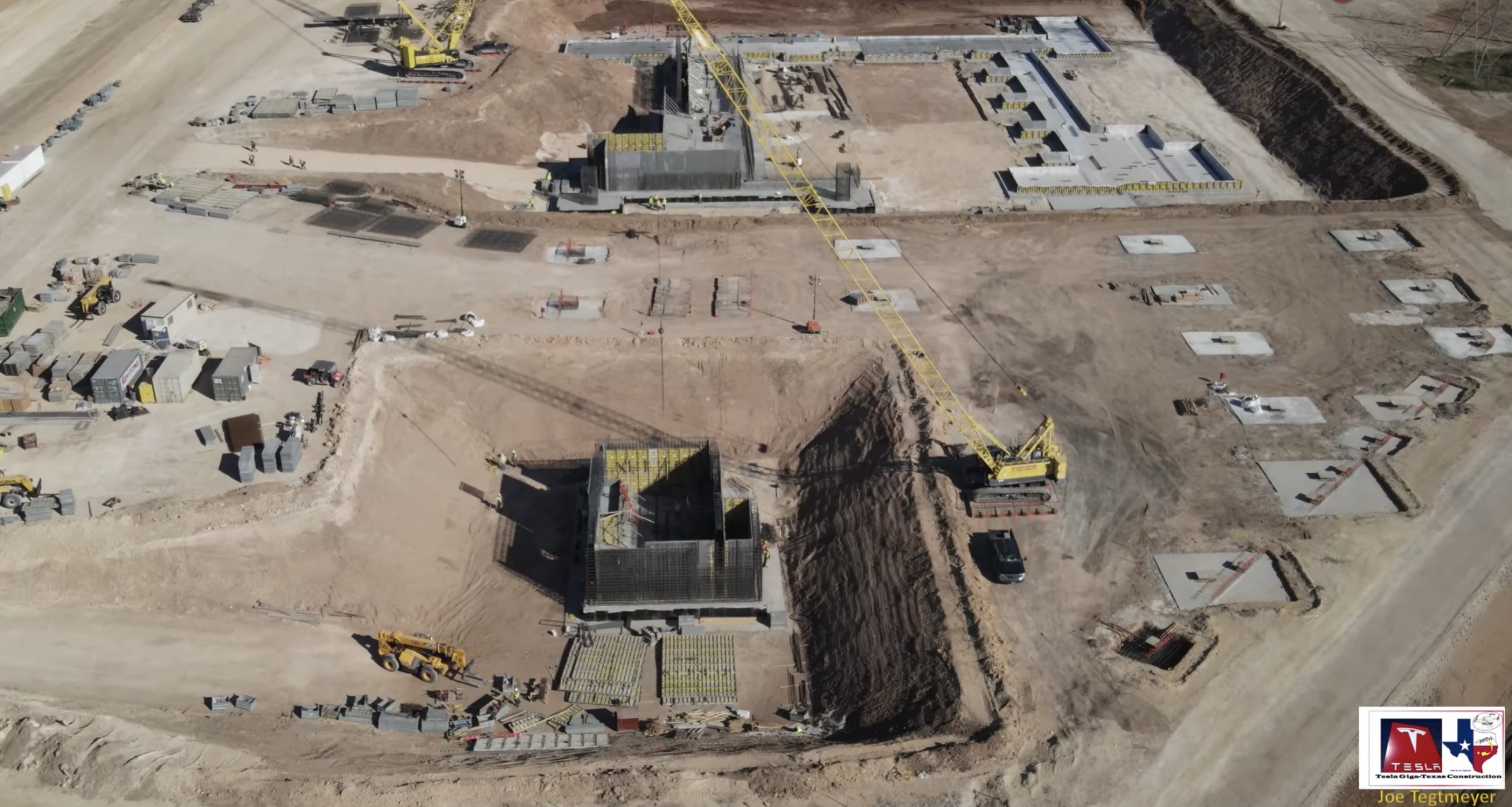Tesla CEO Elon Musk recently praised the Texas team working on the Austin Gigafactory in a recent tweet. Based on videos of Giga Texas’s progress, Tesla seems to be moving along with its construction right on schedule.
“Tesla Texas team is making great progress! Giga Texas factory will be an a$$kicker,” Musk replied to a tweet from the Austin Tesla Club, who shared a photo of the construction site. Each new Gigafactory has developed its own special defining trait, even the ones that are in the middle of construction–and Giga Texas is no different.
Giga Shanghai became known for its speed and the quality of its vehicles. Tesla’s factory in Berlin will have extremely advanced technology thanks to its next-gen paint shop, which Elon Musk seems very excited to see in action.
Giga Texas will probably be known for two notable traits. First, it will most likely have the most beautiful Gigafactory grounds. After announcing the location of Tesla’s next Gigafactory in the US, Musk shared that parts of the Giga Texas complex will be an “ecological paradise” of sorts that the public could visit.
Giga Texas’s second notable trait would be its production of the Cybertruck. If the vehicle proves successful, there is a good chance that Tesla’s other facilities may also manufacture the all-electric pickup, and there’s an equally good chance that the truck could be produced for a very long time. But the factory in Austin will always be Tesla’s first Cybertruck production line.
Elon Musk shared that Tesla made some minor tweaks to the Cybertruck before production starts in Giga Texas. During the Q3 earnings call, Musk said that the Cybertruck’s production depends a lot on Giga Texas’ completion, making his recent praise even more noteworthy.
“Like [the Cybertruck is] going to be made in Austin. So it’s kind of dependent on completing that factory. And there are obviously new technologies with the high hardness kind of armored exoskeleton,” he said.
The Cybertruck’s design has received polarized reactions. The Tesla all-electric truck’s stainless steel exoskeleton allows the vehicle to have a unique take on the traditional pickup. Musk has noted in the past that the Cybertruck’s origami-like approach in making the exoskeleton may be one of the difficulties Tesla has to face during the EV pickup’s production.
“This is — it’s never been done before, so there’ll probably be some challenges along the way. And obviously, something that’s extremely high hardness and difficult to scratch or dent is also difficult to form. So there’s manufacturing challenges there. That’s why it’s so cleaner,” Musk said during the last earnings call.
Based on Elon Musk’s Cybertruck updates on Twitter, though, the Tesla team has been working continuously on the EV pickup truck’s design since its unveiling last November. Thanks to Tesla’s experience with the Model 3’s “production hell”, the company is well aware that the Cybertruck’s final design will likely determine how challenging its production ramp will be. The Tesla team’s constant work on refining the details of the Cybertruck’s design hints that the company is doing everything in its power to make sure the production of its first EV pickup goes by smoothly.
Watch a recent flyover of the Tesla Gigafactory Texas site in the video below.

News
Tesla Model X lost 400 pounds thanks to these changes

The Tesla Model X has always been one of the company’s most loved vehicles, despite its low sales figures, which can be attributed to its high price tag.
However, the Model X has been a signature item on Tesla’s menu of cars, most notably recognized by its Falcon Wing Doors, which are aware of its surroundings and open according to what’s around it.
But recent improvements to the Model X were looking slim to none, but it appears most of the fixes actually happened under the body, at least according to Tesla’s Vice President of Powertrain, Lars Moravy.
In a recent interview with Car and Driver, Moravy detailed all of the changes to the 2026 iteration of the vehicle, which was about 400 pounds lighter than it was originally. The biggest change is a modification with the rear motor, switching from an induction-type motor to a permanent-magnet design and optimizing the half-shafts, which shed about 100 pounds.
Tesla also got “almost 80 pounds out of the interior bits and pieces,” which “included making parts thinner, different manufacturing process choices, and incorporating airbag-deployment requirements into the headliner fabric,” the report said.
Additionally, the standard five-passenger, bench seat configuration saved 50 pounds by ditching pedestal mounting. This also helped with practicality, as it helped the seat fold flat. Engineers at Tesla also saved 44 pounds from the high-voltage wiring through optimizing the wiring from the charge-port DC/DC converter and switching from copper to aluminum wiring.
Tesla makes a decision on the future of its flagship Model S and Model X
Tesla also simplified the cooling system by reducing the number of radiators. It also incorporated Nürburgring cooling requirements for the Plaid variant, which saved nearly 30 pounds.
Many Tesla fans will be familiar with the megacastings, manufactured in-house by presses from IDRA, which also saves more than 20 pounds and boosts torsional stiffness by around 10 percent. Tweaks to the suspension also saved 10 pounds.
People were truly disappointed with what Tesla did with the Model S and Model X, arguing that the cars needed a more severe exterior overhaul, which might be true. However, Tesla really did a lot to reduce the weight of the vehicle, which helps increase range and efficiency. According to Grok, every 200 pounds removed adds between 7 and 15 percent to range estimations.
This makes sense considering the range estimations both increased by 7 percent from the Model X’s 2025 configuration to the 2026 builds. Range increased on the All-Wheel-Drive trim from 329 miles to 352 miles, while the Plaid went from 314 miles to 335 miles.
News
Tesla launches its new branded Supercharger for Business with first active station

Tesla has officially launched its first branded Supercharger just months after initiating a new program that allows third-party companies to brand their own charging piles.
The site opened in Land O’ Lakes, Florida, and features eight V4 Supercharging stalls offering up to 325 kW of charging speed. It appears it was purchased by a company called Suncoast Credit Union. This particular branch is located Northeast of Tampa, which is on the Gulf of Mexico.
It features graphics of Florida animals, like alligators:
Here’s a video of the graphics being installed on the Tesla Superchargers at this site: https://t.co/oIfEPNZjAH pic.twitter.com/ENWakZ2qT9
— TESLARATI (@Teslarati) November 20, 2025
Tesla launched this program back in September, and it basically was a way to expand its Supercharger presence and also allow companies to pay for the infrastructure. Tesla maintains it. When it announced the “Supercharger for Business,” it said:
“Purchase and install Superchargers at your business. Superchargers are compatible with all electric vehicles, bringing EV drivers to your business by offering convenient, reliable charging.”
The program does a few things. Initially, it expands EV charging infrastructure and makes charging solutions more readily available for drivers. It can also attract people to those businesses specifically.
Tesla launches new Supercharger program that business owners will love
The chargers can also be branded with any logo that the business chooses, which makes them more personalized and also acts as an advertisement.
The best part is that the customers do not have to maintain anything about the Supercharger. Tesla still takes care of it and resolves any issues:
“We treat your site like we treat our sites. By providing you with a full-service package that includes network operations, preventative maintenance, and driver support, we’re able to guarantee 97% uptime–the highest in the industry.”
It appears the Superchargers will also appear within the in-car nav during routing, so they’ll be publicly available to anyone who needs to use them. They are still available to all EVs that have worked with Tesla to utilize its infrastructure, and they are not restricted to people who are only visiting the business.
Cybertruck
Tesla reveals its Cybertruck light bar installation fix

Tesla has revealed its Cybertruck light bar installation fix after a recall exposed a serious issue with the accessory.
Tesla and the National Highway Traffic Safety Administration (NHTSA) initiated a recall of 6,197 Cybertrucks back in October to resolve an issue with the Cybertruck light bar accessory. It was an issue with the adhesive that was provided by a Romanian company called Hella Romania S.R.L.
Tesla recalls 6,197 Cybertrucks for light bar adhesive issue
The issue was with the primer quality, as the recall report from the NHTSA had stated the light bar had “inadvertently attached to the windshield using the incorrect surface primer.”
Instead of trying to adhere the light bar to the Cybertruck with an adhesive, Tesla is now going to attach it with a bracketing system, which will physically mount it to the vehicle instead of relying on adhesive strips or glue.
Tesla outlines this in its new Service Bulletin, labeled SB-25-90-001, (spotted by Not a Tesla App) where it shows the light bar will be remounted more securely:


The entire process will take a few hours, but it can be completed by the Mobile Service techs, so if you have a Cybertruck that needs a light bar adjustment, it can be done without taking the vehicle to the Service Center for repair.
However, the repair will only happen if there is no delamination or damage present; then Tesla could “retrofit the service-installed optional off-road light bar accessory with a positive mechanical attachment.”
The company said it would repair the light bar at no charge to customers. The light bar issue was one that did not result in any accidents or injuries, according to the NHTSA’s report.
This was the third recall on Cybertruck this year, as one was highlighted in March for exterior trim panels detaching during operation. Another had to do with front parking lights being too bright, which was fixed with an Over-the-Air update last month.










